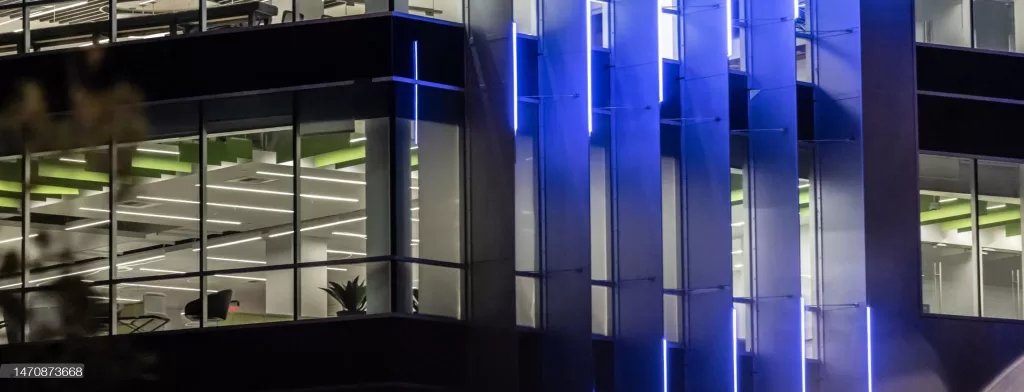By offering durable and energy-efficient lighting options, LED (Light-Emitting Diode) technology has revolutionised the lighting business. LED drivers are essential for powering and managing LEDs in the background. One important element to take into account when choosing an LED driver is whether it is isolated or not.

In-depth analysis of the distinctions between isolated and non-isolated LED drivers will be done in this blog, along with an examination of why they matter for LED lighting. You will be able to make knowledgeable judgements about your lighting initiatives if you are aware of these subtleties.
Understanding LED Drivers:
Table of Contents
ToggleIt is crucial to comprehend the function and purpose of LED drivers themselves in order to fully appreciate the relevance of isolated and non-isolated LED drivers. LED lighting systems’ power supply is regulated by LED drivers, which are electrical equipment. Their main duties include delivering the necessary voltage for the operation of the LEDs, converting AC (alternating current) voltage to DC (direct current), and managing the current flowing through the LEDs.
LED isolated drivers:
Electrical barriers are used to separate the input (primary) and output (secondary) sides of the driver circuit in isolated LED drivers. Utilising elements like transformers or optocouplers, this isolation is achieved. Isolated LED drivers have a number of benefits, such as:
Enhanced Safety: Isolated LED drivers’ electrical separation reduces the possibility of damage to the LED system during electrical breakdowns and shields users from electric shock.
Improved Reliability: Isolated LED drivers boost the reliability and lifetime of the LED system by segregating the primary and secondary circuits. This prevents noise, voltage spikes, and other electrical disturbances from impacting the LED system.
Due to their improved electrical isolation, isolated LED drivers are more compatible with a range of control systems, dimmers, and smart lighting technologies.
Non-Isolated LED Drivers:
Electrical isolation between the input and output sides of the driver circuit is absent in non-isolated LED drivers, sometimes referred to as non-isolated buck drivers. Despite their simpler design, they have a few drawbacks and considerations:
Cost-Effectiveness: Non-isolated LED drivers are a recommended option for projects with a tight budget because they are typically cheaper to develop and buy.
Compact Size: Non-isolated LED drivers typically have smaller, more compact sizes due to their streamlined designs, making them ideal for applications with confined space.
Non-isolated LED drivers might not offer as high a level of electrical safety as isolated drivers, which makes them less suited for settings or applications that call for strict safety rules.
Considerations:
There are a number of things to consider before choosing between isolated and non-isolated LED drivers, including:
Safety Requirements: Consider the safety laws and certifications required for your particular lighting use, especially in delicate areas like hospitals or industrial settings.
Assess the temperature, humidity, and existence of any electrical noise or interference in the environment where your LED lights will be functioning.
Application Particulars: Take into account the lighting specifications, control setups, and dimmer capabilities required for your project. Isolated LED drivers’ improved compatibility and reliability may be advantageous for some applications.
Cost and Budget:
Consider the costs associated with isolated and non-isolated LED drivers in relation to the unique requirements of your project.
Case Studies and Real-World Applications:
Examine case studies and real-world applications where selecting between isolated and non-isolated LED drivers had a big influence. Examples could include the installation of business lights.
Office Buildings:

Isolated LED drivers are frequently preferred in sizable office buildings with sophisticated control requirements and complex lighting systems. Isolated drivers guarantee dependable operation, reduced electrical noise, and compatibility with dimming systems thanks to their electrical isolation. This leads to greater staff productivity, improved lighting performance, and energy cost reductions.
Retail Stores:

To emphasise products and create a welcoming atmosphere, retail locations need adaptable lighting solutions. Since isolated LED drivers are compatible with cutting-edge control systems like DALI (Digital Addressable Lighting Interface), they are frequently employed in these applications. A steady and flicker-free dimming is made possible by isolated drivers, giving customers the best possible shopping experience.
Hospitality Sector:

When designing their lighting systems, hotels, restaurants, and event spaces put safety, comfort, and appearance first. By segregating the primary and secondary circuits, isolated LED drivers improve safety by lowering the possibility of electric shock or fire danger. Additionally, independent drivers support intelligent lighting systems, allowing for the customization of moods and dynamic lighting settings for various occasions.
Healthcare Facilities:

Reliable and safe lighting is essential in healthcare settings. To ensure electrical safety and reduce interference with delicate medical equipment, isolated LED drivers are essential. The electrical isolation offered by these drivers lowers the possibility of electrical problems that can jeopardise patient care. Additionally, isolated drivers provide interoperability with lighting control systems designed specifically for the healthcare industry, enabling accurate lighting adjustments for a variety of medical procedures.
Art galleries and museums:

The preservation of artwork is a primary focus in these establishments. Due to their small size and low cost, non-isolated LED drivers are frequently used for accent and display lighting.
These drivers can be covertly incorporated into light fixtures to provide focused illumination for artwork without detracting from the aesthetics of the area. Isolated LED drivers can be used to guarantee protection against electrical errors and interference, albeit in locations where strict safety regulations and precise control are needed.
It is important to note that the choice between isolated and non-isolated LED drivers depends on various factors, including safety requirements, control system compatibility, and the specific needs of each application. Consulting with lighting experts and considering the unique characteristics of the installation will help determine the most suitable driver option for optimal performance and safety.
Conclusion:
In conclusion, the choice between isolated and non-isolated LED drivers has a significant impact on the performance, safety, and compatibility of LED lighting systems. Isolated LED drivers provide enhanced safety, reduced electrical noise, and improved reliability, making them ideal for applications that require stringent safety regulations or advanced control systems.
On the other hand, non-isolated LED drivers offer cost-effectiveness and compact size, making them suitable for budget-conscious projects with limited space requirements.
When considering LED lighting installations for commercial spaces such as office buildings, retail stores, hospitality venues, healthcare facilities, and art galleries, it is essential to carefully assess the specific needs and requirements of each application.
Consult with lighting experts and consider factors such as safety regulations, environmental considerations, control system compatibility, and budget constraints.
To make informed decisions and access high-quality LED drivers for your lighting projects, we recommend visiting the website https://illustrious.co.in .They offer a wide range of LED drivers, ensuring safety, reliability, and compatibility for various commercial lighting applications.
For further assistance or inquiries, you can also contact their dedicated team via WhatsApp at +91 9958077611.
Choose the right LED drivers for your commercial lighting installations, and unlock the full potential of LED technology—achieving energy-efficient, long-lasting, and visually appealing lighting solutions that enhance productivity, safety, and customer experiences.
